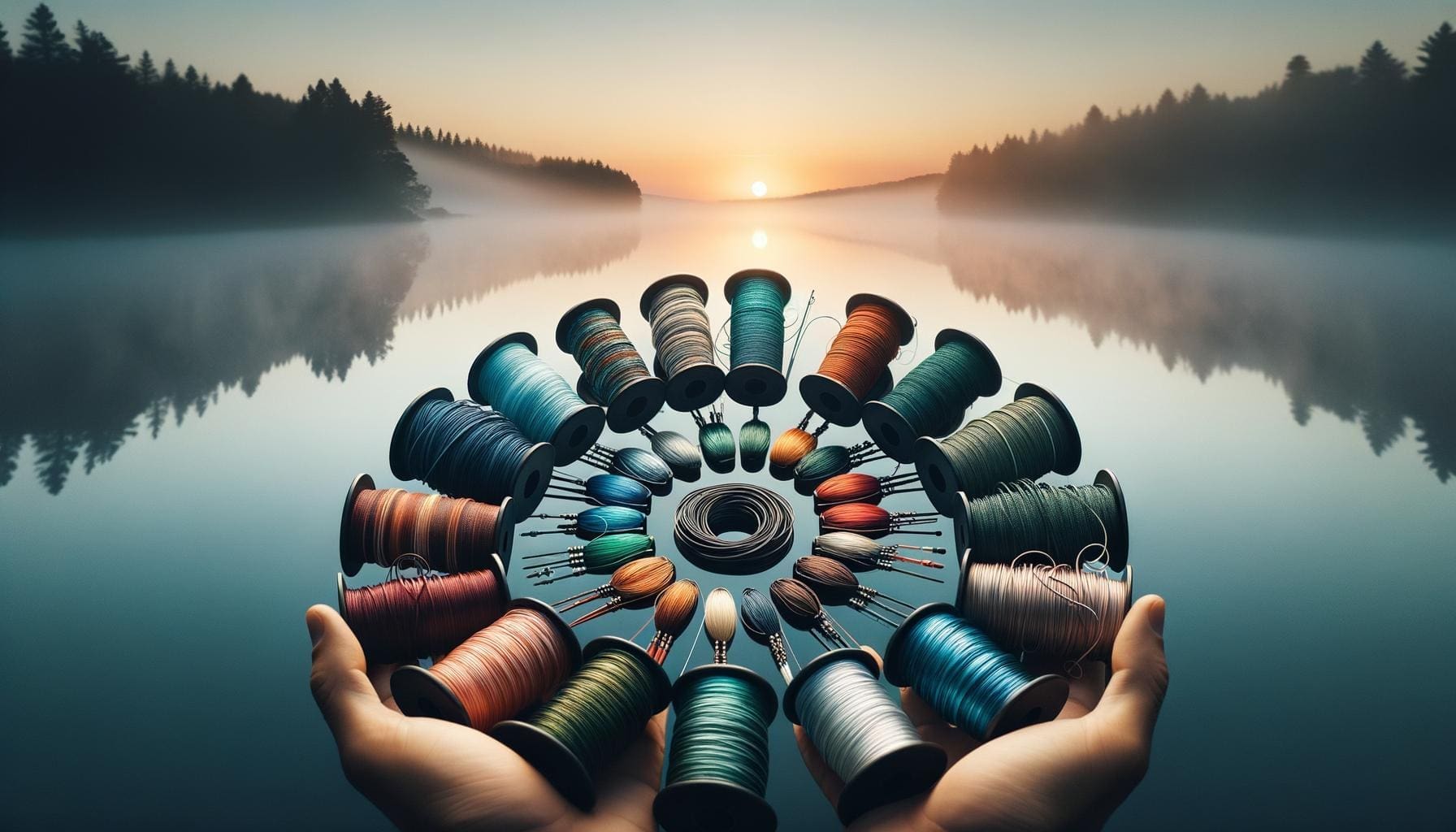Embarking on a fishing journey demands not just skill and patience but also the right gear, and at the heart of this gear is your fishing line. It’s the critical link between you and your catch. This guide walks you through choosing the perfect line, whether you’re battling a fierce bass or outwitting a cunning trout. With an ocean of options out there, let’s dive in and unravel the mystery of selecting the fishing line that will not only match your fishing environment but also enhance your angling success.
Understanding Different Types of Fishing Lines
When stepping into the world of fishing, one quickly realizes that the choice of fishing line is not just a matter of picking a spool off the shelf. There are several types of lines, each with its unique properties, advantages, and specific uses. Knowing the differences can vastly improve your fishing success and enjoyment. Here’s a breakdown of the main types of fishing lines available to anglers:
Monofilament: Often known simply as “mono,” monofilament line is a single strand of material, typically nylon. It is the most popular type of fishing line due to its versatility, ease of use, and affordability. Monofilament lines are great for beginners and work well for a wide range of fishing situations.
Braided: Braided lines, often referred to as “braid,” are made of several strands of material braided together. This construction gives them a much thinner diameter compared to monofilament lines of the same strength. Braided lines provide excellent knot strength, have no stretch, and are very durable, making them ideal for heavy cover and deep-water fishing.
Fluorocarbon: Similar in appearance to monofilament, fluorocarbon lines are made from a different polymer that makes them nearly invisible underwater, a critical advantage in clear water or when targeting skittish fish. Fluorocarbon is also more abrasion-resistant and less stretchy than monofilament, offering better sensitivity.
Choosing the right type of fishing line involves considering the fishing environment, the species being targeted, and personal preferences in fishing technique. Each line type has its place in an angler’s arsenal, and understanding these differences is the first step toward making informed decisions on the water.
Key Factors to Consider When Choosing a Fishing Line
Selecting the perfect fishing line goes beyond personal preference; it involves understanding various factors that can significantly impact your fishing success. Here are key considerations to keep in mind before making your choice:
| Factor | Description | Impact |
|---|---|---|
| Water Clarity | Clear water necessitates a more invisible line to avoid spooking fish. | Choosing a fluorocarbon line might be best due to its low visibility underwater. |
| Type of Fish | Different species have varying levels of line sensitivity and strength requirement. | Heavier, braided lines for strong, aggressive fish; monofilament or fluorocarbon for finesse fishing. |
| Casting Distance | The need for longer casts mandates a line with less drag and stretch. | Consider thinner, braided lines for better aerodynamics and less wind resistance. |
| Line Strength | Also known as test, it refers to the amount of weight a line can hold before breaking. | Ensure the line’s test rating matches the anticipated catch weight and fishing condition. |
| Line Stretch | Stretch can affect sensitivity and how well you set the hook. | Monofilament stretches more, absorbing shock; Braided offers less stretch, providing better sensitivity. |
| Water Conditions | Fishing in areas with high abrasion requires a more resistant line. | Fluorocarbon and certain braided lines offer higher abrasion resistance. |
Understanding these factors will help you narrow down your options and choose a fishing line that complements your fishing style, target species, and the environment. Whether you’re aiming for precision in clear water, battling through heavy cover, or casting great distances, there’s a line designed for every scenario. Keep these considerations in mind, and you’ll be well on your way to optimizing your setups for the best possible outcomes on the water.
Monofilament vs. Braided vs. Fluorocarbon: Pros and Cons
When it comes to fishing lines, the debate often revolves around three main types: monofilament, braided, and fluorocarbon. Each of these lines has its unique characteristics, making them suitable for different fishing conditions and techniques. Let’s delve into the pros and cons of each to help you make an informed decision for your next fishing adventure.
| Type | Pros | Cons |
|---|---|---|
| Monofilament | Highly versatile, affordable, good stretch for shock absorption, floats on water | Less sensitive due to stretch, weaker abrasion resistance, can degrade over time with UV exposure |
| Braided | Highly sensitive with minimal stretch, strong abrasion resistance, long casting distances, does not degrade in sunlight | Visibly noticeable underwater, harder to tie knots, more expensive |
| Fluorocarbon | Nearly invisible underwater, sinks faster for deep water fishing, good abrasion resistance, less stretch than monofilament | More expensive, stiffer making it harder to manage, can sink too quickly for surface lures |
Monofilament is often the go-to choice for beginners due to its user-friendly nature. It’s affordable and flexible, making it easier to tie knots. However, its stretchiness, while forgiving at times, can reduce sensitivity, making it harder to feel nibbles.
Braided line shines in situations requiring long casts and high sensitivity. Its lack of stretch provides instantaneous feedback, essential for detecting light bites. However, its visibility in clear water can be a drawback, necessitating the use of a fluorocarbon leader in such conditions.
Fluorocarbon, with its near-invisibility underwater, is the stealth operator of fishing lines. It’s perfect for clear water or spooky fish. Its sinking properties make it ideal for crankbaits and other subsurface applications. Nonetheless, its stiffness can pose challenges, especially in knot tying and handling.
In conclusion, the choice between monofilament, braided, and fluorocarbon lines depends on your specific fishing technique, target species, and water conditions. Each type brings its unique advantages to the table, and understanding these can significantly enhance your angling results.
Matching the Fishing Line to Your Fishing Environment
Achieving success in fishing relies heavily on aligning your gear with the environment you’re fishing in. The right fishing line can make a significant difference in whether you reel in a catch or tell a story about the one that got away. Different water bodies and conditions call for specific types of lines to maximize your chances. Here’s how to match your fishing line to various environments:
Freshwater Lakes and Ponds: For these typically calmer waters, monofilament lines are a solid choice. They offer enough flexibility for the commonly found fish species in these environments. For bass or pike, which might hide in thicker underwater structures, consider a more abrasion-resistant line, like fluorocarbon.
Streams and Rivers: The moving waters of streams and rivers introduce additional challenges, such as stronger currents and more abrasive surroundings. A braided line, known for its strength and lack of stretch, can offer better control and durability in these conditions.
Clear Water: In crystal-clear water bodies, the visibility of your line can spook fish easily. Fluorocarbon lines, nearly invisible underwater, are ideal for these scenarios. Their refractive index is similar to water, making them hard for fish to spot.
Murky Water: Visibility is less of a concern in turbid waters, making line color less critical. Here, your focus should be on strength and sensitivity, making braided lines a favorable option. Their lack of stretch allows for better bite detection in waters where seeing your line or the fish is challenging.
Saltwater: The corrosive nature of saltwater environments demands a line that can withstand such conditions without degrading. Braided lines, coupled with a fluorocarbon leader for invisibility near the lure, strike a good balance between strength and stealth.
| Environment | Recommended Line Type | Reason |
|---|---|---|
| Freshwater Lakes and Ponds | Monofilament | Flexibility and affordability for calm waters |
| Streams and Rivers | Braided | Strength and control in moving waters |
| Clear Water | Fluorocarbon | Nearly invisible and abrasion-resistant |
| Murky Water | Braided | Strength and sensitivity for difficult visibility |
| Saltwater | Braided with Fluorocarbon Leader | Durability and invisibility for corrosive conditions |
Adapting your fishing line to the specific characteristics of your fishing environment not only improves your catch rate but also enhances your overall fishing experience. Consider the conditions you’ll be facing and choose a line that offers the best combination of visibility, strength, and durability.
How Line Weight and Thickness Affect Your Fishing Experience
Understanding the weight and thickness, often referred to as the test and diameter, of your fishing line is crucial in tailoring your gear to your targeted fish species and fishing conditions. These parameters not only influence the casting ability but also the line’s visibility and the type of bait or lure you can use effectively. Here’s how these aspects can play into your angling success.
Line Weight (Test): The weight or test of a fishing line refers to the maximum amount of weight the line can hold before breaking. It’s measured in pounds and selecting the right test is essential for the type of fish you’re aiming to catch. A higher test line is necessary for larger, stronger fish, but it comes at the cost of increased visibility and decreased sensitivity.
| Target Fish Size | Recommended Line Weight |
|---|---|
| Small to Medium (Trout, Bass) | 2-10 lbs |
| Medium to Large (Pike, Salmon) | 10-25 lbs |
| Large (Tuna, Marlin) | 30+ lbs |
Line Thickness (Diameter): The diameter of a fishing line impacts its water resistance, casting distance, and visibility under water. Thinner lines offer less resistance, enabling longer casts and reducing the likelihood of fish spotting the line. However, thinner lines are also more prone to abrasion and breaking.
- Pros of Thinner Lines:
- Greater casting distance
- Less visibility to fish
- Better lure presentation
- Cons of Thinner Lines:
- Lower breaking strength
- Higher susceptibility to wear and tear
Balancing Act:
Choosing the right line weight and thickness is a balancing act between visibility, castability, durability, and the ability to land the fish you’re targeting. For stealthier approaches in clear water, opt for thinner, lower test lines. When targeting larger fish or fishing in areas with lots of covers, such as weeds and rocks, a thicker, higher test line will serve you better.
Remember, the weight and thickness of your fishing line can greatly influence your fishing experience. It’s about finding the sweet spot that allows you to cast effectively, remain stealthy, and provide the strength needed to bring in your catch. Adjusting these variables according to your fishing environment and target species is key to optimizing your performance and success on the water.
The Role of Line Color in Fishing Success
Choosing the right color for your fishing line can be as critical as selecting its type or weight. Line color can significantly affect how visible your line is to fish, how well you can see it, and ultimately, your success in hooking a catch. Here’s a breakdown on how different line colors impact your fishing outcomes and when to use them:
| Line Color | Best Used In | Visibility to Fish | Visibility to Angler |
|---|---|---|---|
| Clear | Clear water conditions | Low | Low |
| Green | Weedy or algal-rich waters | Low | Medium |
| Blue | Deep sea or clear open water | Low | Medium-High |
| Yellow | Murky waters or tracking line’s movement | High | High |
| Red | Theorized to be less visible underwater | Controversial – Varied opinions | Medium |
Clear Line: Perfect for stealth in clear waters. It’s almost invisible to fish, providing an edge in highly pressured or clear-water environments. However, it can be difficult for anglers to track.
Green Line: Blends in with environments that have heavy vegetation or green-hued waters. Its optimal when fishing in lakes or rivers with lots of cover.
Blue Line: Ideal for offshore or deep-sea fishing. It blends with the water color, becoming less visible to fish while remaining detectable to the angler above water.
Yellow Line: Highly visible to anglers, making it easier to detect bites and monitor line movement. It’s a favorite among bass anglers who rely on visual bite indicators, but it’s also visible to fish, making it less ideal for clear waters.
Red Line: There’s a theory that red line becomes invisible as it sinks, blending with the water. However, this theory has mixed evidence, and visibility may vary depending on water conditions and depth.
In conclusion, the selection of line color should be based on both the fishing environment and your needs as an angler. Whether you need stealth to trick wary fish or visibility to keep track of your line, there’s a color tailored for your fishing scenario. Experimenting with different colors in various conditions can help you discover the best match for your style and maximize your fishing success.
Tips for Spooling and Maintaining Your Fishing Line
Proper spooling and maintenance of your fishing line are crucial to ensure optimal performance and longevity. Incorrect practices can lead to problems like line twists, knots, and early wear. Here are essential tips for spooling your line correctly and maintaining it in top condition:
Spooling Your Fishing Line:
- Check the Line Capacity: Before spooling, ensure your reel can hold the length and test of the line you’re planning to use. Overloading a reel can lead to problems during casting and retrieval.
- Maintain Proper Tension: When spooling, apply light pressure to the line to prevent it from being too loose on the reel. This helps avoid line twists and knots.
- Match Line Direction: Pay attention to the direction in which your reel spins and the line comes off the spool. They should match to minimize the risk of twists.
- Use a Spooling Tool: If available, a spooling tool can help maintain consistent tension and alignment, further reducing the chances of line twists.
Maintaining Your Fishing Line:
- Regular Inspection: Check your line for nicks, frays, or weak spots before and after each trip. Even minor damage can lead to a big loss during a fight with a fish.
- Avoid Direct Sunlight: UV rays can weaken your line. Store your gear in a cool, dark place when not in use.
- Clean Your Line: After fishing, especially in saltwater, rinse your line and reel with fresh water to remove any debris or salt residue.
- Re-spool Regularly: Replace your line regularly, depending on how often you fish and the conditions you fish in. Even the best lines degrade over time.
- Use Line Conditioner: Applying a line conditioner can reduce memory, improve castability, and prolong your line’s life.
Following these tips will help ensure your fishing line performs at its best each time you hit the water. Proper care and maintenance can make a significant difference in your fishing experience and success rate.
Common Mistakes to Avoid When Choosing a Fishing Line
Selecting the proper fishing line is pivotal for a successful fishing trip. However, anglers, especially those new to the sport, can make several common mistakes that could compromise their effort. Here’s a rundown of these pitfalls and how to steer clear of them:
- Ignoring Line Stretch: Different lines have varying stretch levels, impacting sensitivity and hook-setting capability. Overlooking this factor, particularly when fishing for species that require a delicate touch, can result in missed bites.
- Overlooking Water Conditions: The choice between clear, green, blue, or yellow lines should correspond with the water conditions you plan to fish in. Using a line that’s too visible under certain water conditions can deter fish.
- Neglecting Line Memory: Lines with high memory tend to hold their coiled shape, causing twists, knots, and potentially weaker casting. Always check the line’s memory before making your selection, particularly if you aim for longer casts.
- Choosing the Wrong Weight: The line’s test weight must be suitable for the fish you’re targeting. A line that’s too light might break with a larger catch, while one that’s too heavy can reduce your bait’s natural movement.
- Not Considering Abrasion Resistance: Fishing in areas with rocks, branches, or heavy cover requires a line with good abrasion resistance. Overlooking this factor can lead to the line snapping on contact with obstacles.
- Forgetting about UV Resistance: Some fishing lines, mainly monofilament, can degrade under prolonged exposure to sunlight. If you often fish in sunny conditions, consider UV-resistant lines or storing your gear properly.
- Mismatching Line with Reel and Rod: Ensure the line you choose is compatible with your rod and reel. Misalignment can affect the equipment’s performance and your overall fishing experience.
By being aware of these common mistakes and actively working to avoid them, you can make more informed decisions when selecting a fishing line. This forethought not only improves your chances of a successful catch but also enhances your enjoyment of the sport.
Expert Recommendations: Best Fishing Lines for Various Types of Fishing
Selecting the right fishing line can dramatically improve your fishing experience and success rate. Below are expert recommendations for the best fishing lines tailored to different fishing scenarios:
| Type of Fishing | Recommended Line | Reason | Photo | Link |
|---|---|---|---|---|
| Bass Fishing in Heavy Cover | PowerPro Spectra Fiber Braided Fishing Line | High strength and abrasion resistance. | 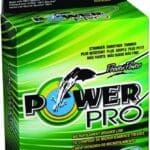 |
Buy now |
| Trout Fishing in Clear Streams | Seaguar Blue Label 100% Flourocarbon Fishing Line Leader, Freshwater | Low visibility with moderate stretch. | 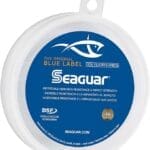 |
Buy now |
| Deep Sea Fishing | Sufix 832 Advanced Superline Braid | Strength, long casting, low visibility. |  |
Buy now |
| General Freshwater Fishing | Berkley Trilene XL Monofilament Fishing Line | Versatile, cost-effective, and user-friendly. | 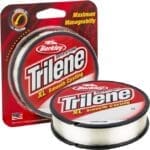 |
Buy now |
| Ice Fishing | Sufix 832 Ice Braid 4 lb Ghost | Sensitivity and strength under cold conditions. | 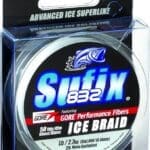 |
Buy now |
| Surf Fishing | SpiderWire Stealth Superline or Berkley Trilene Big Game | Distance to reach offshore spots, strength, and versatility. | 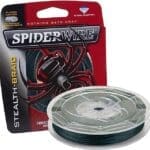 |
Buy now |
Bass Fishing in Heavy Cover: The braided line’s zero stretch and high power make it perfect for pulling fish out of thick covers without breaking.
Trout Fishing in Clear Streams: Fluorocarbon’s nearly invisible nature under water tricks the keen-eyed trout, making it a top choice for clear water conditions.
Deep Sea Fishing: A braided line ensures you have the strength and depth needed, while a fluorocarbon leader keeps your setup invisible to the deep-sea dwellers.
General Freshwater Fishing: Monofilament lines provide enough flexibility, buoyancy, and ease of use, suitable for a variety of freshwater fish.
Ice Fishing: The no-stretch, high-sensitivity braided line aids in detecting subtle bites in the cold, with a monofilament leader for added invisibility.
Surf Fishing: High casting distance is crucial; thus, a long-casting monofilament or braided line is recommended to reach the fish from the shore.
Choosing the right line involves considering your fishing environment, target species, and personal preferences. Whether you’re casting into the depths of the ocean or navigating your lure through thick lily pads, there’s an ideal line for every scenario, ensuring your hooks are set firmly and your catch securely landed.
Wrapping It Up
As we reel in the end of our comprehensive journey on selecting the right fishing line, it’s clear the line you choose plays a pivotal role in your fishing adventures. From the versatile monofilament to the mighty braided lines and the invisible fluorocarbons, there’s a line perfectly tailored for every angler’s needs and conditions they might face. Remember, the best fishing line isn’t just about the catch; it’s about enhancing your overall experience, ensuring durability, and maximizing performance. May your line be strong, your casts far-reaching, and your hauls plentiful. Happy fishing!

